Bridges (featuring Vasily Peskov as author)
Few roads do not cross a bridge. Memory will always bring back the creaking of logs, the hollow ringing of metal or the silence of stone.
Bridges, of all of man's structures, are the most poetic. I wondered why this was so. Perhaps because they span water, because a bridge is always a part of a road and a road means travel, which excites and pleases. Finally, bridges bring people together.
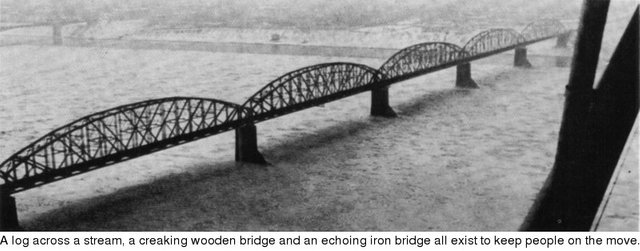
Bridges are among the most ancient man-made structures. Having once crossed a stream along a fallen tree, primitive man certainly realized that he could fell another tree in a place of his own choosing. Erecting a handrail was the next step.Today's bridges are truly amazing. The bridge across Lake Pontchartrain in the United States is thirty miles long. Another bridge is suspended from cables that are a meter in diameter. It is so big it is forever being painted. No sooner does the team of painters reach one end, than it is time to start all over again at the other.
The Sydney Harbor Bridge in Australia is considered to be one of the most beautiful in the world. I saw it from a plane, from the beach, and drove and walked across it.
Building a bridge is always a difficult and expensive undertaking. Sometimes construction drags on for years. However, bridges have also been built very quickly. One of the bridges across the Dnieper was built in thirteen days in 1943, during the Red Army's offensive.
The names of many fine bridge-builders, the originators of truly bold projects, have gone down in history. An engineer whose speciality is building bridges is always in demand, and a bridge-builder is revered not only where bridges of masonry, concrete and steel are going up. Many people have seen the film about the Pygmies of the Bambute tribe. If you recall, they were building a bridge across the Ituri River. The bravest man was tied to a liana, which was then drawn back and let loose, sending him across the river in a graceful curve like a bird. He latched on to a tree on the opposite side with a hooked pole. Now the liana spanned the river, and the men began stringing other branches along it. That is how the Bambute of Africa build a hanging bridge.
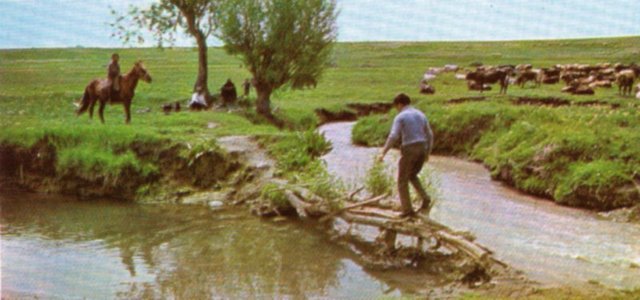
How many bridges are there on earth? It would be impossible to count them. There are hanging bridges, pontoon, masonry, timber, bamboo, iron and concrete bridges, draw-bridges, lift bridges, viaducts and aqueducts. There are over five hundred bridges in the city of Leningrad. If you travel across the Soviet Union from the Western border to the Amur River the train will clatter over bridges time and again, to say nothing of the countless bridges and planks across streams, ravines,coves,gullies and inlets! G. I.Zingorenko, a bridge-builder, and I once tried to count the bridges over the Volga River. He counted seventeen and then stopped, for there were many more. However, I believe the Dnieper River takes first place in the Soviet Union in this respect. Then again, there is a truly great river, the Lena in Siberia, that has only one bridge. In winter you cross the Lena over the ice and in summer by ferry.
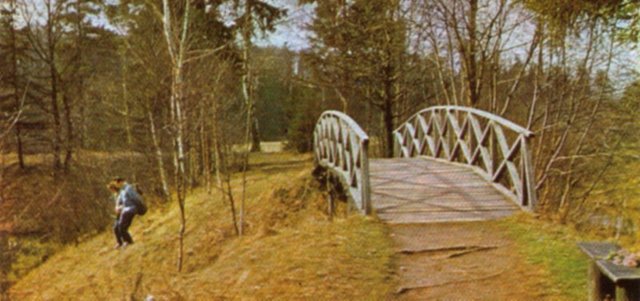
Zingorenko has been building bridges for forty-five years and doesn't even know how many he has built, though there are some he will never forget. One is the bridge across the Don at Voronezh that was built in 1930.Twelve years later, in 1942, Zingorenko was ordered to blow it up to stop the advancing German troops. "There were no sappers, so I took a helper along and the two of us carried the dynamite in sacks that night. We secured them in the middle of the spans. . .The whole sky was lit up by fires. The bridge was beautiful that night. I looked at my watch and counted off the seconds until it blew. Then, in 1943, I was in charge of rehabilitating it."
Such is the fate of bridges. During the war bombs fell more heavily on them than elsewhere. No one who took part in ferrying across a river during the war, with bombs bursting all around, raising columns of water that was murky from blood, will ever forget it. The laws of camouflage called for bridges that did not rise above the surface of the water. Trucks crossed them with the water lapping at their fenders.
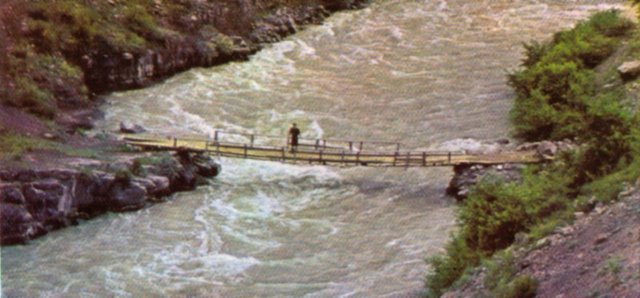
Bridges always share the fate of their people. They are never left standing for an advancing enemy to cross over. They are the first to be rehabilitated when the enemy has been driven out.
In the past decade dozens of large bridges have been built in our country: across the Volga in Saratovand Yaroslavl, across the Dnieper in Kiev, across the Oka, the Dvina, the Neva, the Irtysh and many other rivers, with a bridge in Norilsk, beyond the Arctic Circle, being the northernmost of all the bridges in our country. Many bridges have been built along the Abakan-Taishet Line. Most of the new bridges are concrete traffic bridges, which is indicative of a rapidly-deyeloping network of highways.
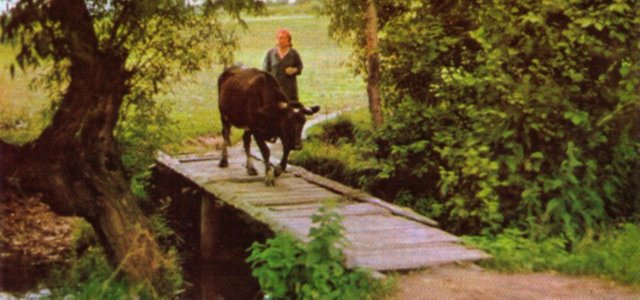
Bridges, like people, age and do not live forever. Concrete bridges have a long life-span. Iron bridges have a lifespan of about a hundred years, after which the sections have to be changed. An old veteran of a bridge spans the Amur River near Khabarovsk in the Far East. Anyone who has crossed it by train recalls the long, uneasy hum and clatter, for it is the longest bridge in the Soviet Union, consisting of four kilometers of steel latticework.